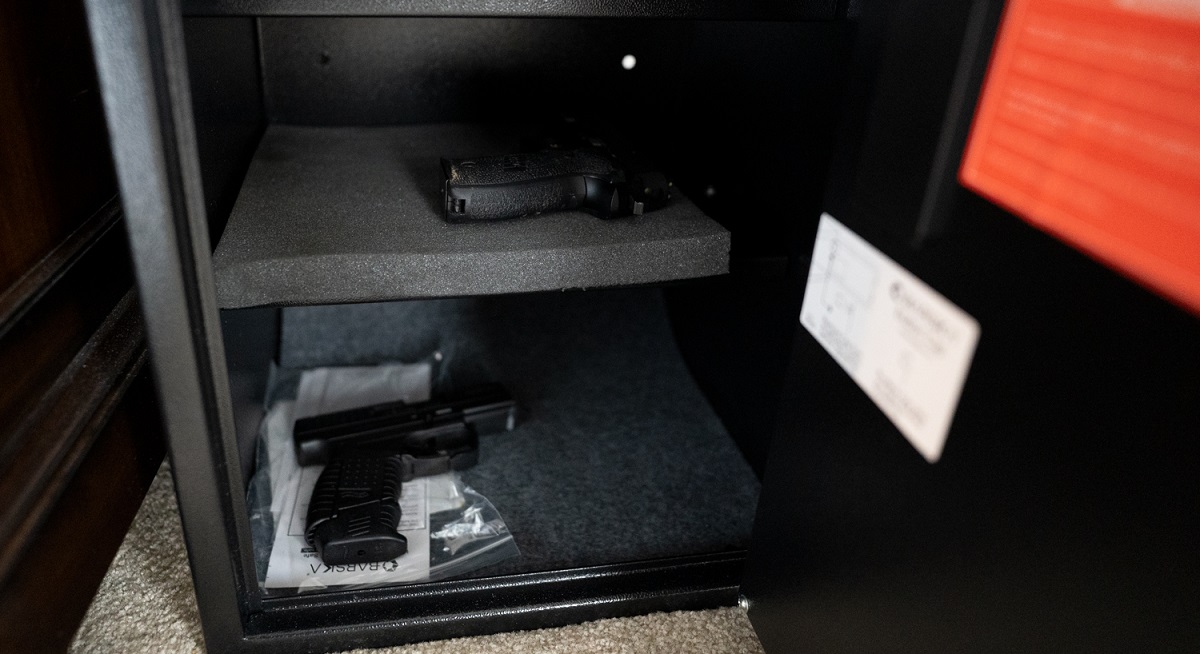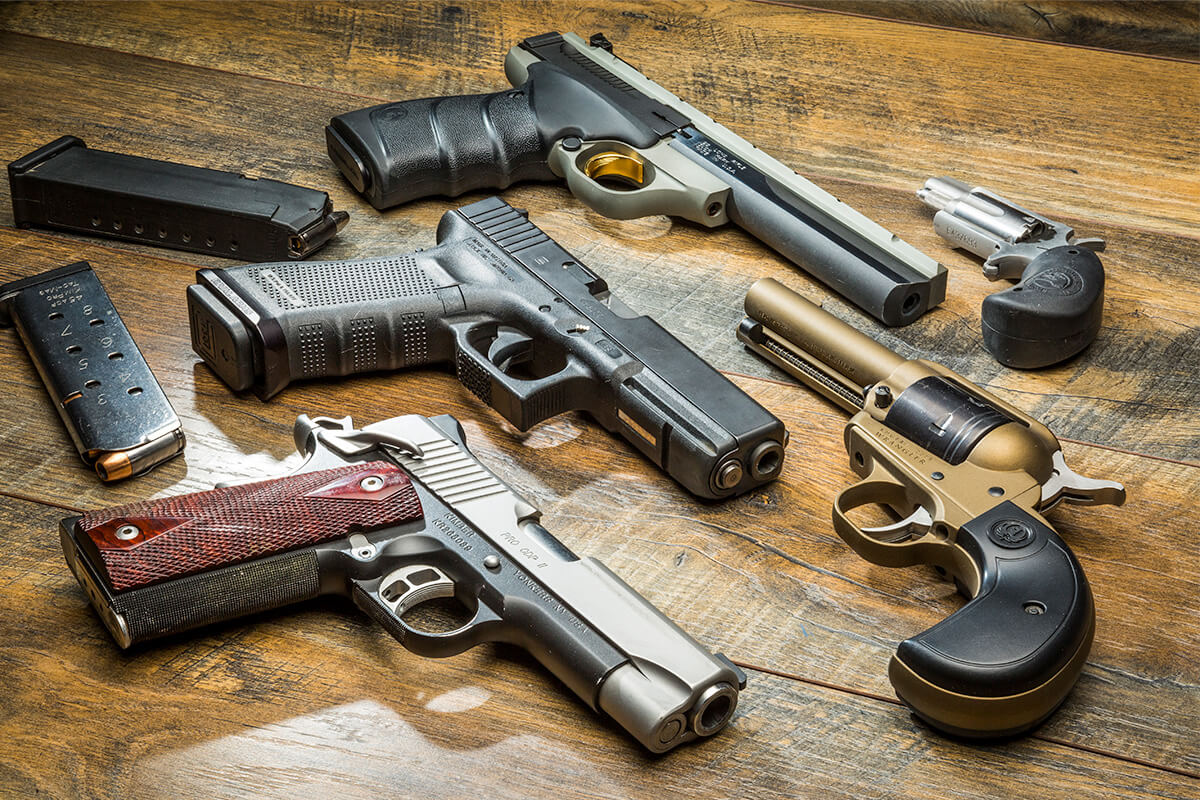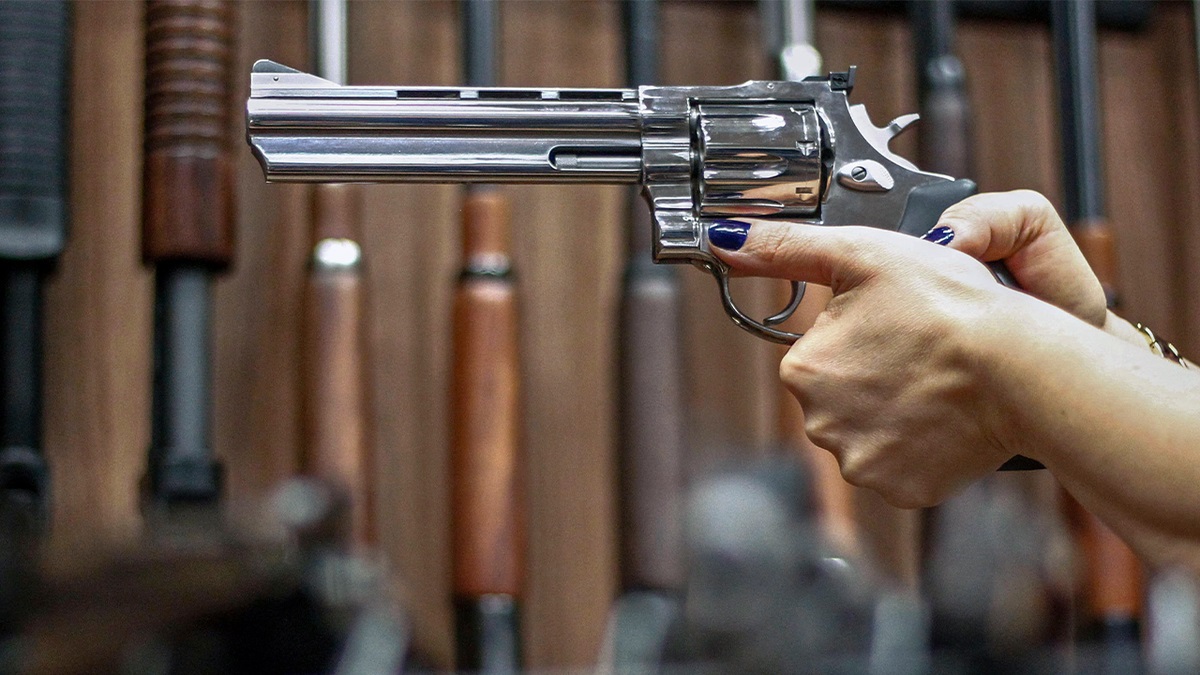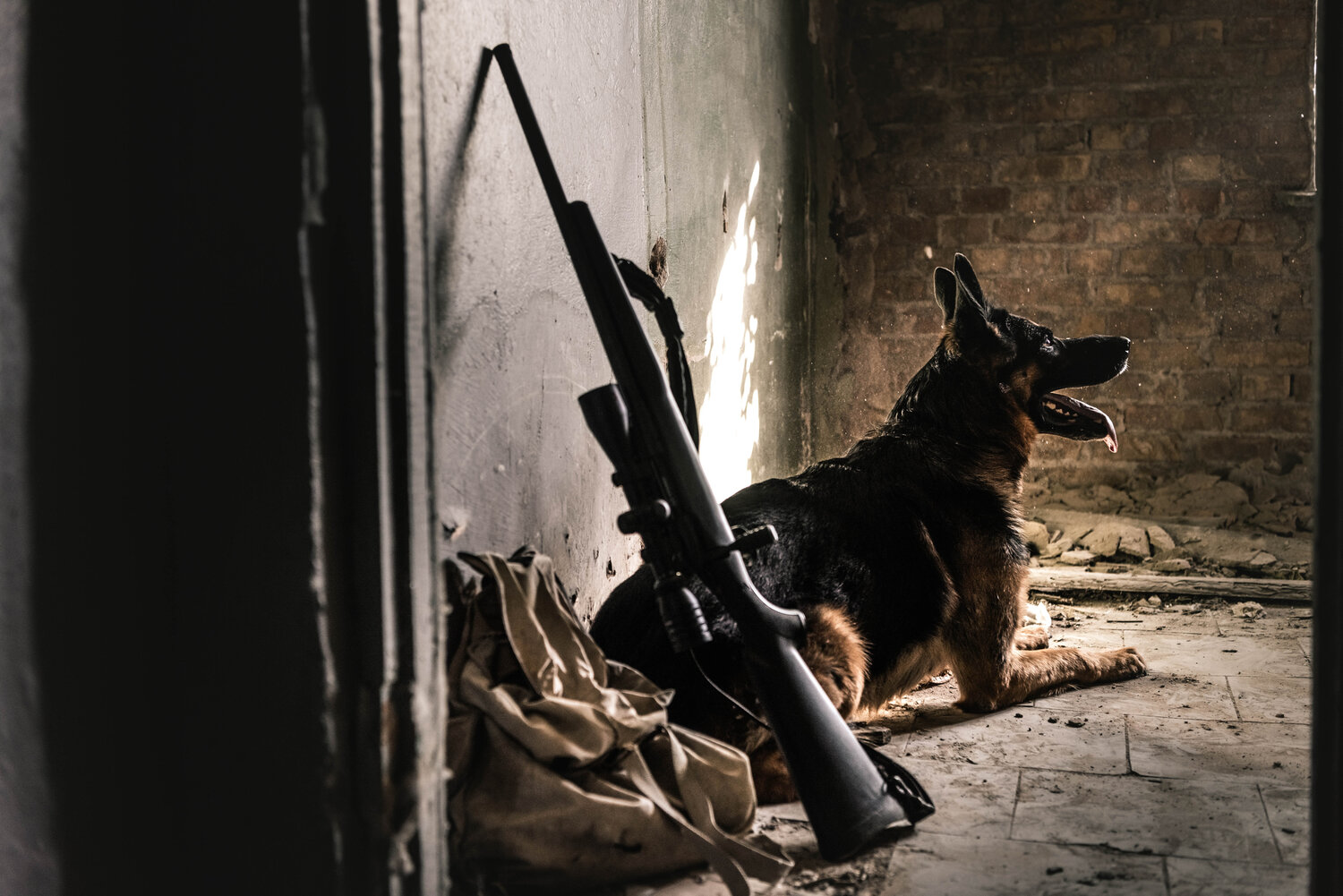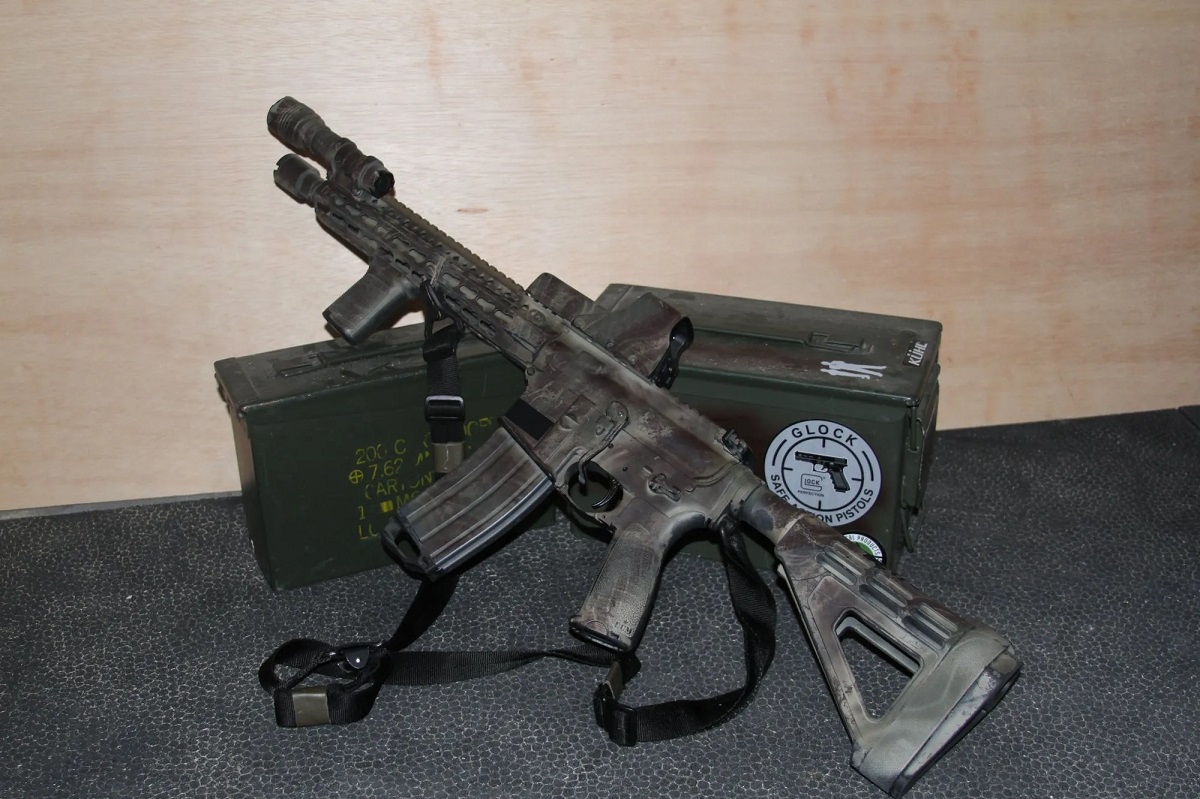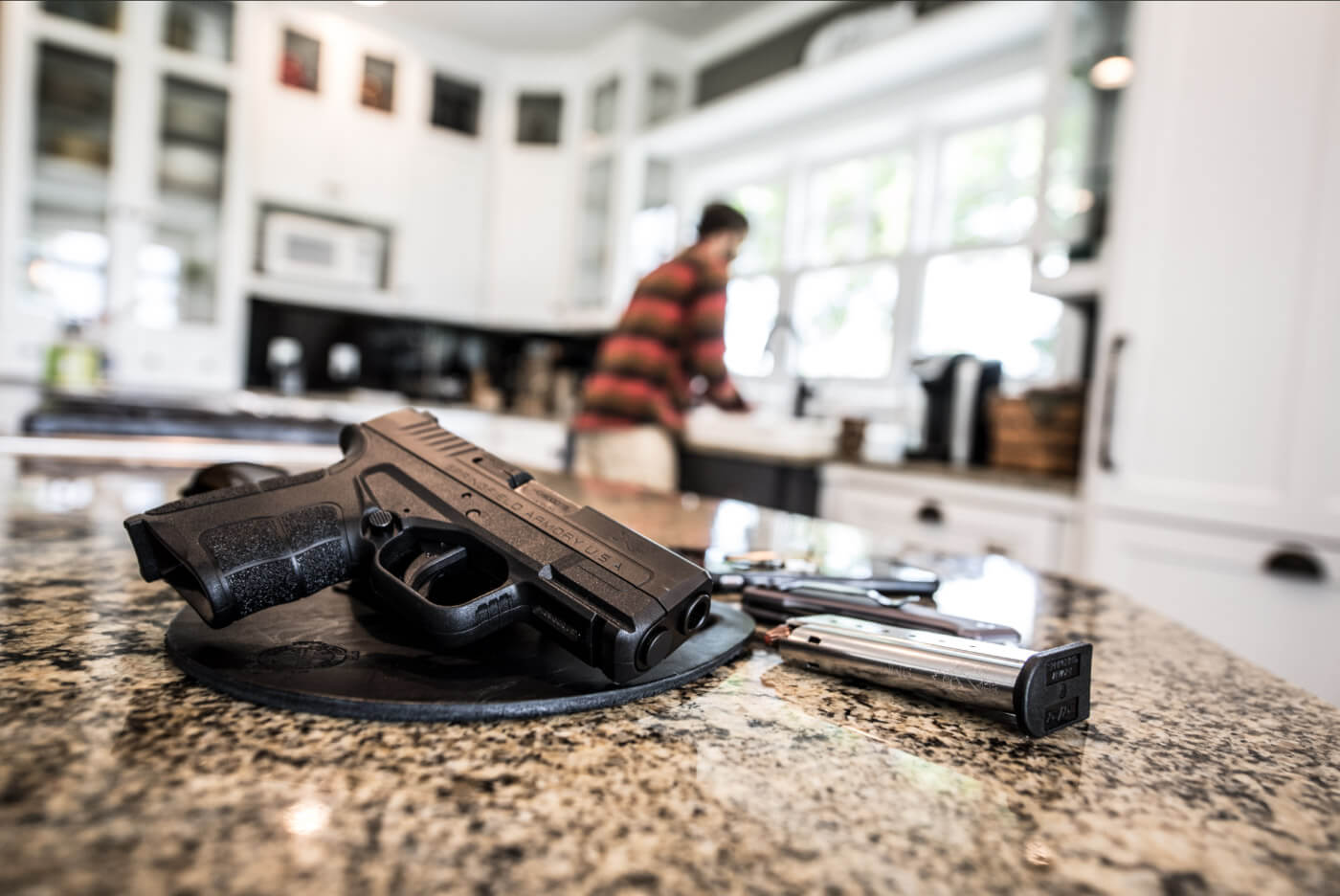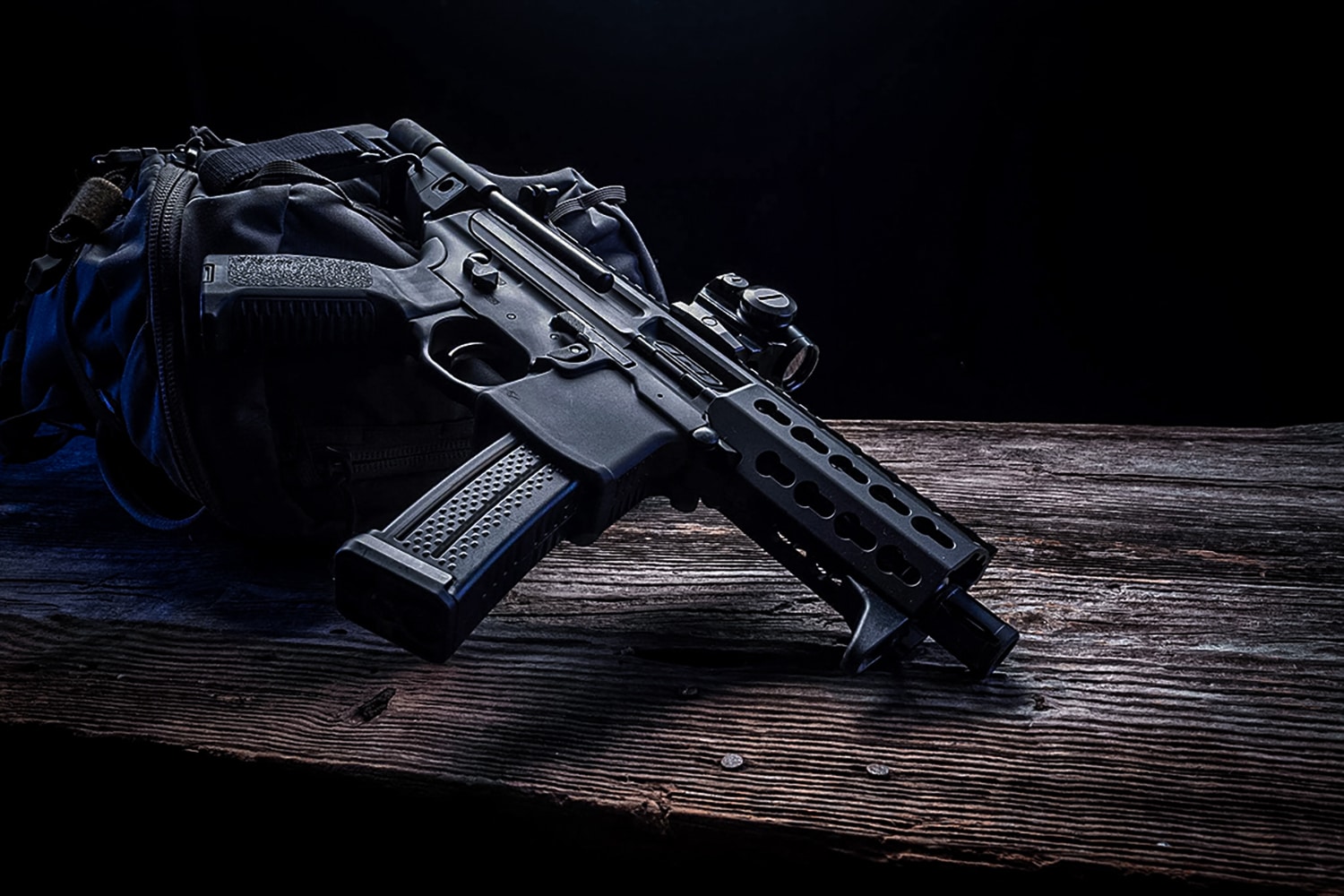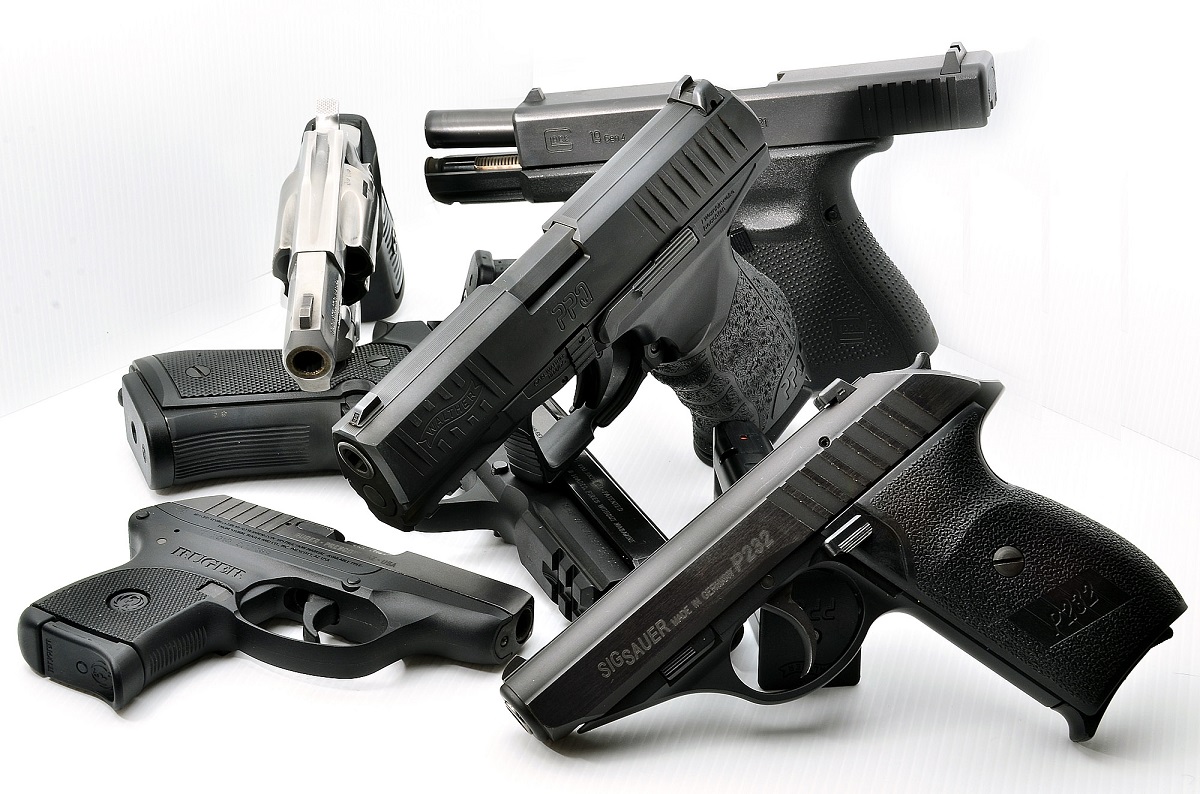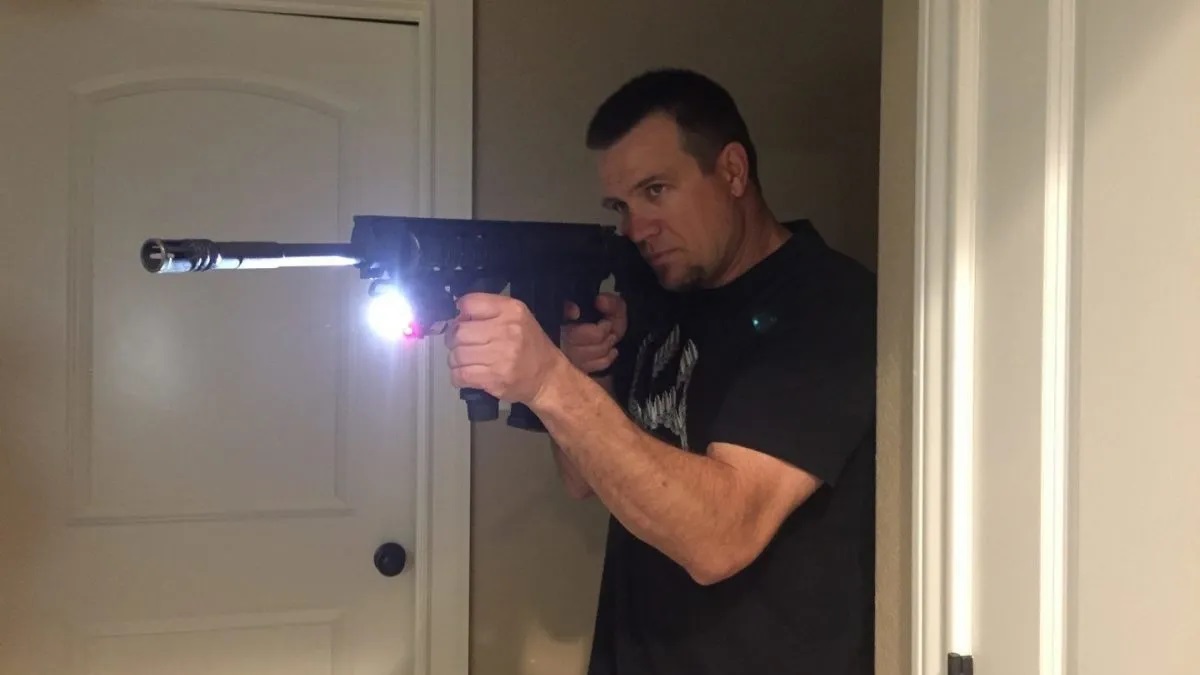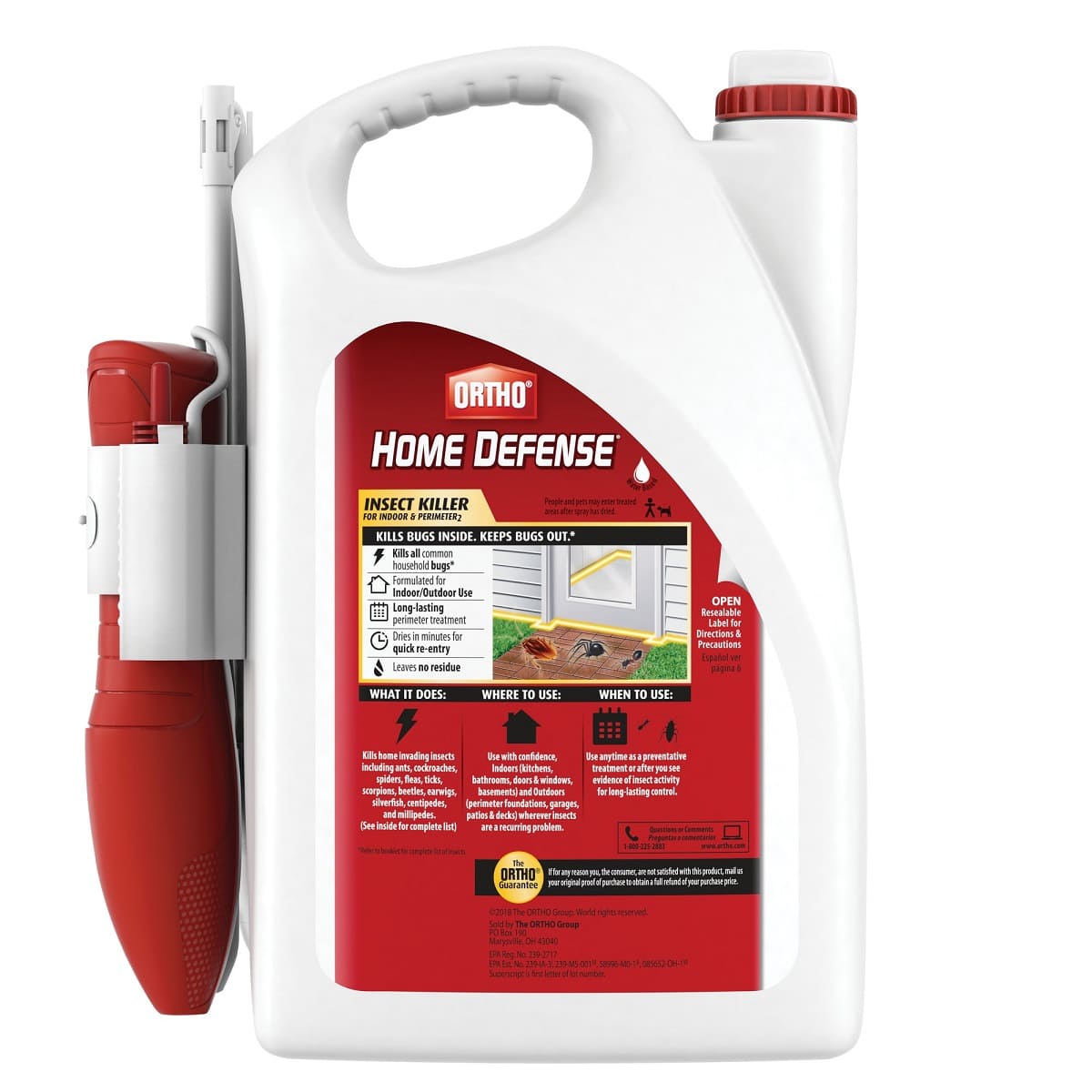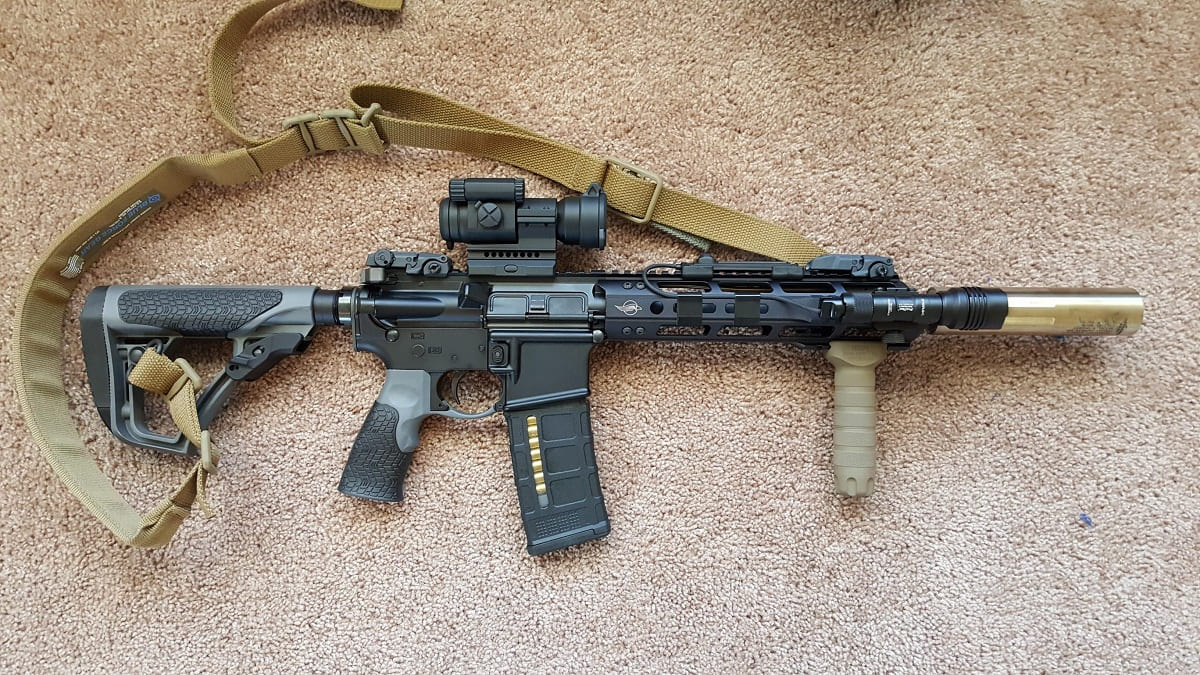Home>Home Security and Surveillance>How To Practice Guns For Home Defense
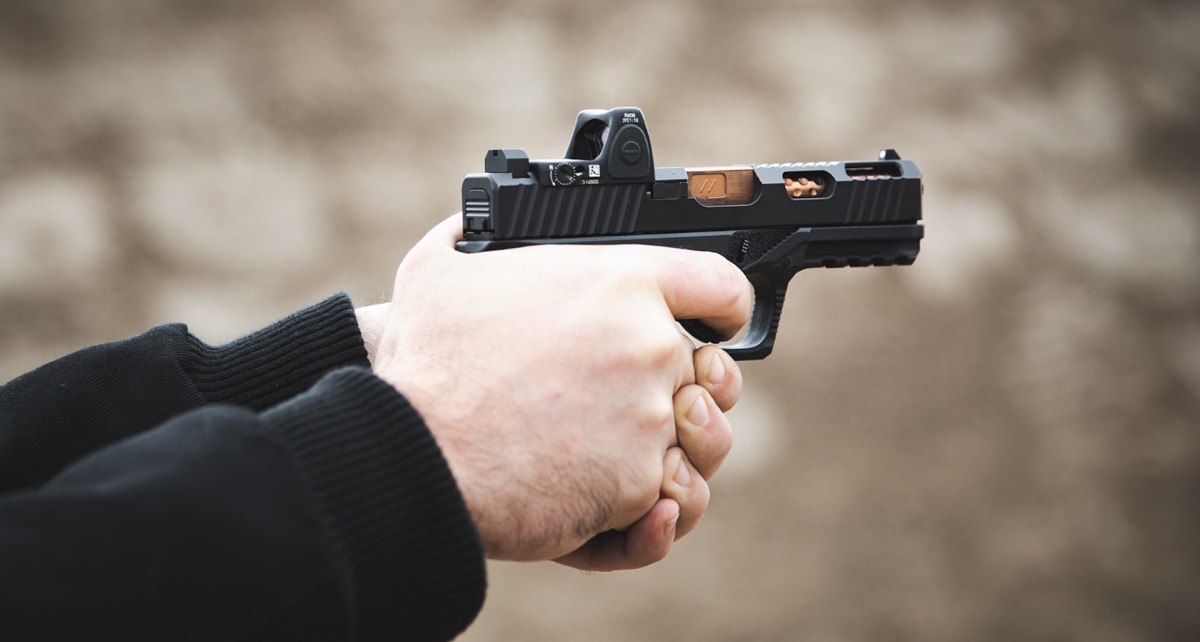

Home Security and Surveillance
How To Practice Guns For Home Defense
Modified: August 17, 2024
Looking to amp up your home security and surveillance? Learn how to practice shooting guns for effective home defense with our comprehensive guide.
(Many of the links in this article redirect to a specific reviewed product. Your purchase of these products through affiliate links helps to generate commission for Storables.com, at no extra cost. Learn more)
Introduction
Welcome to the world of home security and surveillance! In an era where crime rates continue to rise, it’s crucial to take proactive measures to protect ourselves and our loved ones. One of the most effective ways to do so is by investing in a reliable home security system.
When it comes to securing our homes, there are various options available, ranging from burglar alarms to CCTV cameras. However, in this article, we will dive deeper into the world of home security and surveillance, with a specific focus on guns for home defense.
Guns have long been a popular choice for individuals seeking to protect their homes. While controversial, when used responsibly and with proper training, guns can provide an added layer of security and peace of mind. But before diving into the topic of guns for home defense, let’s explore why home defense is so important in the first place.
Key Takeaways:
- Owning a gun for home defense requires responsible training and practice. It’s crucial to choose the right firearm, practice safety measures, and seek professional guidance to ensure preparedness and safety.
- Incorporating situational training and maintaining firearms are essential for effective home defense. Practicing shooting drills, seeking professional instruction, and understanding legal and ethical considerations are key to creating a secure environment.
Read more: Home Defense: When A Gun Is Not Enough
The Importance of Home Defense
Your home is your sanctuary, a place where you should feel safe and protected. However, unfortunately, the reality is that criminals do not discriminate, and anyone can become a victim of a home invasion or burglary. This is where home defense becomes crucial.
Having a robust home defense strategy not only helps deter potential intruders but also provides a sense of security for you and your family. Knowing that you have measures in place to protect your home can help alleviate anxiety and fear.
Furthermore, home defense goes beyond just protecting your property; it’s about safeguarding the lives of those who matter most to you. In times of crisis, such as a break-in, having a well-prepared and trained response can mean the difference between life and death.
Investing in a comprehensive home security system that includes guns can be an effective element of your overall defense strategy. However, it’s important to understand that owning a gun comes with great responsibility.
In the next section, we will explore the factors to consider when choosing the right guns for home defense and the importance of responsible gun ownership and practice.
Choosing the Right Guns for Home Defense
When it comes to selecting guns for home defense, there are several factors to consider. Your choice will depend on your personal preferences, level of comfort with firearms, and the specific needs of your home. Here are some key points to keep in mind:
- Type of firearm: The most common types of firearms for home defense are handguns and shotguns. Handguns are compact and easy to maneuver, while shotguns offer greater stopping power. Consider which type aligns with your comfort level and shooting abilities.
- Caliber: The caliber of the firearm determines the size and power of the ammunition. Choose a caliber that balances stopping power with manageable recoil. Common calibers for home defense handguns include 9mm, .40 S&W, and .45 ACP.
- Capacity: The capacity of the firearm refers to the number of rounds it can hold. Higher capacity firearms can be advantageous in situations where multiple threats may be present. However, it’s important to comply with local laws and regulations regarding magazine capacity.
- Accessories: Consider additional accessories that can enhance the functionality and safety of your chosen firearm. This may include weapon-mounted lights, laser sights, or aftermarket grips to improve control and accuracy.
- Reliability: Opt for firearms from reputable manufacturers known for their reliability and durability. The last thing you want is a firearm that malfunctions when you need it most.
- Training and practice: Regardless of the firearm you choose, proper training and regular practice are essential. Familiarize yourself with the operation of the firearm, practice proper shooting techniques, and stay up-to-date with relevant laws and regulations.
It’s important to note that choosing the right gun for home defense is a personal decision. It’s recommended to seek the guidance of knowledgeable professionals, such as firearms instructors or staff at reputable gun stores, to ensure that you make an informed choice.
Ensuring Safety in Gun Practice
Gun practice is an essential element of responsible gun ownership, especially when it comes to using firearms for home defense. However, safety should always be the top priority. Here are some important guidelines to follow to ensure safety during gun practice:
- Treat every firearm as if it is loaded: Always assume that a firearm is loaded, even if you believe it to be unloaded. This mindset helps reinforce safe handling habits and prevents the risk of accidental discharge.
- Keep your finger off the trigger: Until you are ready to shoot, keep your finger off the trigger and along the frame or slide of the firearm. This reduces the likelihood of unintentional firing.
- Always point the firearm in a safe direction: Be aware of your surroundings and ensure that the muzzle of the firearm is always pointed in a safe direction, away from people and objects that you do not intend to shoot.
- Use proper safety equipment: When practicing with firearms, it is crucial to wear appropriate safety equipment such as eye and ear protection. This protects against potential hazards such as loud noises and debris.
- Know your target and what’s beyond it: Before pulling the trigger, be certain of your target and what lies beyond it. Bullets have the potential to travel through walls and pose a danger to innocent individuals.
- Avoid alcohol and drugs: Never handle firearms while under the influence of alcohol or drugs. These substances impair judgment, coordination, and reaction times, increasing the risk of accidents.
- Store firearms securely: When not in use, firearms should be stored securely in locked cabinets or safes, with ammunition stored separately. This prevents unauthorized access, particularly by children or individuals who should not have access to firearms.
- Regularly inspect your firearms: Routinely check your firearms for any signs of damage or wear. Malfunctioning firearms can be hazardous, so it’s important to address any issues promptly.
Remember, safety is a fundamental principle of responsible gun ownership. By following these safety practices and being mindful of your surroundings, you can ensure a safe and enjoyable gun practice experience.
Setting Up a Safe Practice Space
Creating a safe practice space is essential for effective and responsible gun practice. Whether you have an indoor or outdoor shooting range, follow these guidelines to ensure a safe environment:
- Select a suitable location: Choose a location for your practice space that is away from populated areas and has a backdrop that can safely contain bullets.
- Designate a clear shooting area: Clearly define the shooting area with appropriate markers or boundaries. This helps prevent unauthorized individuals from entering the space while shooting is in progress.
- Check for obstacles: Thoroughly inspect the shooting area for any obstacles or hazards that could interfere with the trajectory of bullets or cause potential accidents.
- Ensure proper ventilation: If practicing indoors, ensure that there is adequate ventilation to mitigate the buildup of gases and reduce the risk of respiratory issues.
- Install appropriate safety gear: Install safety features such as bulletproof barriers or baffles to minimize the risk of errant shots and protect against ricochets.
- Create a secure storage area: Establish a secure storage area within the practice space to store firearms and ammunition during breaks or when not in use. This prevents unauthorized access.
- Have clear communication: Establish a system of communication with others in the practice space, such as hand signals or commands, to ensure clear and effective communication during shooting sessions.
- Maintain a clean and organized space: Regularly clean and organize the practice space to remove debris, spent casings, and other clutter that may impede safe shooting.
Keep in mind that local laws and regulations may dictate specific requirements for setting up a practice space. It’s essential to familiarize yourself with these regulations and abide by them to ensure a safe and legal practice environment.
Read more: How Necessary Is A Gun For Home Defense
Basic Shooting Techniques for Home Defense
When it comes to home defense, possessing basic shooting techniques is crucial for effectively responding to a threat. Here are some essential shooting techniques to consider:
- Stance: Start by establishing a stable shooting stance. This involves placing your feet shoulder-width apart, slightly bending your knees, and leaning slightly forward to maintain balance. This allows for better control and recoil management.
- Grip: Proper grip is essential for maintaining control over your firearm. Grip the firearm firmly with your dominant hand, ensuring that your fingers wrap around the grip. Your non-dominant hand should support and stabilize the firearm.
- Sight alignment: Aligning your sights properly helps ensure accurate shooting. Focus on aligning the front and rear sights in a straight line, with the target in the middle. Proper sight alignment enhances accuracy and target acquisition.
- Sight picture: Sight picture refers to the relationship between the aligned sights and the target. Achieving a proper sight picture involves placing the front sight in clear focus while keeping the target visible. This allows for accurate aim and shot placement.
- Trigger control: Proper trigger control is vital for accurate shooting and minimizing unwanted movement. Place your finger on the trigger pad, taking up the slack in the trigger while maintaining a steady grip. Squeeze the trigger smoothly and steadily without jerking or anticipating the shot.
- Follow-through: After firing a shot, maintain your shooting stance and follow-through by keeping your sights aligned on target. This helps ensure accurate follow-up shots if necessary and allows for quick target reacquisition.
Practicing these basic shooting techniques is essential for developing muscle memory and improving overall shooting proficiency. It’s important to start with slow and deliberate practice, gradually increasing speed and accuracy as you become more comfortable.
Remember, in a high-stress situation such as a home invasion, these techniques will help you respond effectively and make accurate shots when it matters most. Regular and consistent practice will enhance your shooting skills and help build confidence in your ability to defend your home and loved ones.
Always practice proper gun safety when practicing for home defense. This includes keeping the gun pointed in a safe direction, keeping your finger off the trigger until ready to shoot, and treating every gun as if it is loaded.
Practicing Shooting Drills for Home Defense
Incorporating shooting drills into your practice routine is an effective way to enhance your skills and prepare for real-life home defense scenarios. Here are a few shooting drills specifically designed for home defense:
- Quick Target Acquisition Drill: Set up multiple targets at varying distances in your practice space. Start with your firearm holstered or at the low ready position. Practice quickly identifying and engaging each target with accurate shots, focusing on speed and precision.
- Reload Drill: Begin with a partially loaded magazine. Fire a few rounds, then quickly and safely reload using proper technique. Practice reloading while maintaining awareness of your surroundings and target.
- Movement Drill: Incorporate movement into your practice routine to simulate real-life scenarios. Practice moving laterally, forward, and backward while engaging targets. This drill helps develop shooting accuracy while on the move.
- Dim Light Drill: Set up low-light conditions using appropriate lighting equipment or by using reduced lighting in your practice space. Practice engaging targets in low-light situations, emphasizing the use of weapon-mounted lights or handheld flashlights for target identification.
- Multiple Threat Engagement Drill: Set up multiple targets at different angles and distances. Practice quickly transitioning between targets while maintaining accuracy. This drill helps simulate the pressure of engaging multiple threats simultaneously.
- Malfunction Drill: Intentionally induce a malfunction in your firearm by causing a misfeed or failure to eject. Practice clearing the malfunction and getting your firearm back into operation quickly and efficiently. This drill helps prepare you for handling potential malfunctions in real-life situations.
When practicing these drills, remember to prioritize safety and adhere to the basic safety rules at all times. Start with slow and deliberate repetitions, focusing on proper technique and accuracy. As you become more comfortable, gradually increase speed and incorporate timed drills to challenge yourself.
Regularly practicing these shooting drills will boost your confidence, improve your shooting skills, and enhance your ability to react effectively in a home defense situation. Remember, proficiency with your firearm is a critical component of ensuring the safety and security of your home, yourself, and your loved ones.
Maintaining and Cleaning Your Firearms
Proper maintenance and cleaning of your firearms are essential to ensure their reliability, longevity, and safe operation. Regular maintenance will help prevent malfunctions and keep your firearms in optimal working condition. Here are some key steps to follow when maintaining and cleaning your firearms:
- Read the manufacturer’s instructions: Start by familiarizing yourself with the specific maintenance and cleaning requirements outlined in the manufacturer’s manual for your firearm. Different firearms may have specific guidelines, so it’s important to follow them accordingly.
- Unload your firearm: Before performing any maintenance or cleaning, ensure that your firearm is completely unloaded. Remove the magazine, check the chamber, and visually inspect to verify that there are no rounds present.
- Gather the necessary cleaning supplies: Gather the appropriate cleaning supplies, including a cleaning rod, brushes, patches, cleaning solvent, lubricant, and a cleaning mat or surface to work on.
- Disassemble your firearm: Referencing the manufacturer’s instructions, disassemble your firearm as necessary for cleaning. Follow the recommended steps and be sure to exercise caution when handling small parts.
- Clean the barrel and chamber: Using a cleaning rod, attach an appropriate size brush to the rod, dip it in cleaning solvent, and run it through the barrel in a back-and-forth motion. Repeat this process several times to remove fouling and debris. Follow up by running clean patches through the bore until they come out clean.
- Clean the other components: Clean the slide, frame, and other components of your firearm using a brush or cloth soaked in cleaning solvent. Pay close attention to areas prone to fouling and build-up, such as the extractor, firing pin channel, and feed ramp.
- Dry and inspect: Thoroughly dry all cleaned components to remove any residual moisture. Inspect each part for any signs of wear, damage, or corrosion. Replace any worn or damaged components as needed.
- Lubricate and reassemble: Apply a light coat of lubricant to the necessary areas, including the slide rails, barrel hood, and other contact points. Reassemble your firearm according to the manufacturer’s instructions, ensuring that all components are properly seated and secured.
- Store your firearms safely: Once cleaned and lubricated, store your firearms in a secure location, preferably in a locked safe or cabinet, away from children or unauthorized individuals.
Regularly cleaning and maintaining your firearms will not only keep them functioning reliably but also provide an opportunity to inspect and identify any potential issues. By investing time and effort into proper maintenance, you can ensure that your firearms are always ready for use in home defense situations.
Remember to follow all local laws and regulations pertaining to firearms maintenance, cleaning, and storage. Consult with a professional or firearms instructor if you have any doubts or questions about maintaining your specific firearms.
Incorporating Situational Training into Your Practice
While honing your shooting skills is essential, it’s equally important to train for real-life home defense scenarios. Incorporating situational training into your practice routine will help you develop the necessary mindset, decision-making abilities, and tactical skills required in critical situations. Here are some ways to incorporate situational training into your practice:
- Create realistic scenarios: Set up scenarios that mimic potential home defense situations. Consider aspects such as different entry points, low-light conditions, multiple intruders, and varying distances. This will help you simulate real-life scenarios and enhance your ability to respond effectively.
- Practice decision-making: Train yourself to make quick, informed decisions under pressure. Think about various scenarios and consider the appropriate responses, including when to engage a threat, when to take cover, and when to call for help. Practicing decision-making will help you react faster and more decisively in critical situations.
- Utilize cover and concealment: Incorporate the use of cover and concealment in your training. Learn to identify objects and structures that can provide protection from incoming fire while still maintaining visibility of potential threats. Practice shooting from behind cover and moving between positions.
- Engage in force-on-force training: Consider participating in force-on-force training exercises, such as simulations or scenario-based training with non-lethal training ammunition or airsoft guns. These exercises allow you to experience realistic home defense situations, testing your skills and decision-making abilities against live opponents.
- Practice communication: Include communication drills when working as a team or with a partner. Clear and effective communication is crucial during a home defense situation. Practice using clear commands, hand signals, or verbal cues to coordinate movements and engage threats.
- Consider low-light training: Practice shooting in low-light conditions using appropriate lighting equipment. This will simulate the reduced visibility often encountered during home defense scenarios. Incorporate techniques such as weapon-mounted lights, handheld flashlights, and light discipline to identify targets and maintain an advantage.
- Rehearse home defense plans: Develop and rehearse a home defense plan with your family or household members. Practice various escape routes, safe areas to retreat to, and communication protocols. Regularly review and update the plan as needed.
Remember, situational training goes beyond just shooting skills. It encompasses mental preparedness, communication, and critical decision-making. By incorporating these aspects into your practice routine, you’ll be better prepared to handle real-life home defense situations confidently and effectively.
It’s important to note that situational training should always be conducted safely, preferably under the guidance of a qualified instructor or experienced professional. Prioritize safety at all times and avoid scenarios that could pose a risk to yourself or others.
Read more: How To Use Paintball Gun For Home Defense
Seeking Professional Instruction and Training
When it comes to home security and firearms for defense, seeking professional instruction and training is invaluable. While self-study and practice are essential, the guidance and expertise of trained professionals can greatly enhance your skills and ensure responsible gun ownership. Here are several reasons why seeking professional instruction is beneficial:
- Proper technique and safety: Professional instructors provide comprehensive knowledge of proper shooting techniques and safety protocols. They will teach you the fundamentals, help you develop good habits, and correct any errors in your form or approach. This ensures that you are practicing in the safest, most effective manner.
- Experience and expertise: Qualified instructors have extensive experience and expertise in firearms training. They bring a wealth of knowledge on topics such as firearms selection, maintenance, and situational awareness. Their insights can help you make informed decisions and develop a well-rounded skill set.
- Realistic scenarios and simulations: Professionals can create realistic training scenarios specifically tailored to home defense situations. Through simulations or force-on-force exercises, they can challenge you to respond to various threats and evaluate your decision-making skills under pressure.
- Individualized instruction: Professional instructors can provide personalized attention and address any specific areas where you may need improvement. They can identify your strengths and weaknesses, offering tailored guidance to help you reach your full potential.
- Legal and ethical considerations: Instructors can educate you on the legal and ethical aspects of using firearms for home defense. They can help you navigate the laws and regulations governing self-defense and ensure that you understand your rights and responsibilities as a gun owner.
- Continued education and training: Seeking professional instruction allows you to participate in ongoing education and training. Instructors stay up-to-date with the latest information, techniques, and best practices in home defense and firearms training. This ensures that you are continuously improving your skills and staying current with industry standards.
Whether you are a novice or an experienced firearm owner, professional instruction and training are invaluable for enhancing your knowledge and skills in home defense. Look for reputable and certified instructors in your area who specialize in firearms and self-defense training. Research their qualifications, read reviews, and consider their teaching style to find an instructor who suits your needs and goals.
Remember, responsible gun ownership goes beyond knowing how to shoot. Seeking professional instruction ensures that you are well-rounded, informed, and prepared to handle home defense situations safely and effectively.
Conclusion
Ensuring the security and safety of our homes is paramount in today’s world. While there are various options available, guns can be a valuable tool for home defense when used responsibly and with proper training. By understanding the importance of home defense, choosing the right guns, practicing shooting techniques, and incorporating situational training, you can enhance your readiness to respond effectively in critical situations.
Maintaining and cleaning your firearms regularly is crucial for their reliable performance and longevity. Adhering to safety protocols, seeking professional instruction, and regularly practicing shooting drills will help develop your skills, confidence, and decision-making abilities.
Remember, responsible gun ownership entails not only possessing the necessary skills but also understanding the legal and ethical considerations associated with using firearms for home defense. Stay informed about relevant laws and regulations, and seek professional guidance to ensure you are following best practices and abiding by your local regulations.
Ultimately, the goal of home defense is to create a secure environment for you and your loved ones. By combining proper training, controlled practice, and a commitment to safety, you can take proactive steps to protect what matters most. Stay prepared, stay responsible, and prioritize the safety and security of your home.
Frequently Asked Questions about How To Practice Guns For Home Defense
Was this page helpful?
At Storables.com, we guarantee accurate and reliable information. Our content, validated by Expert Board Contributors, is crafted following stringent Editorial Policies. We're committed to providing you with well-researched, expert-backed insights for all your informational needs.
